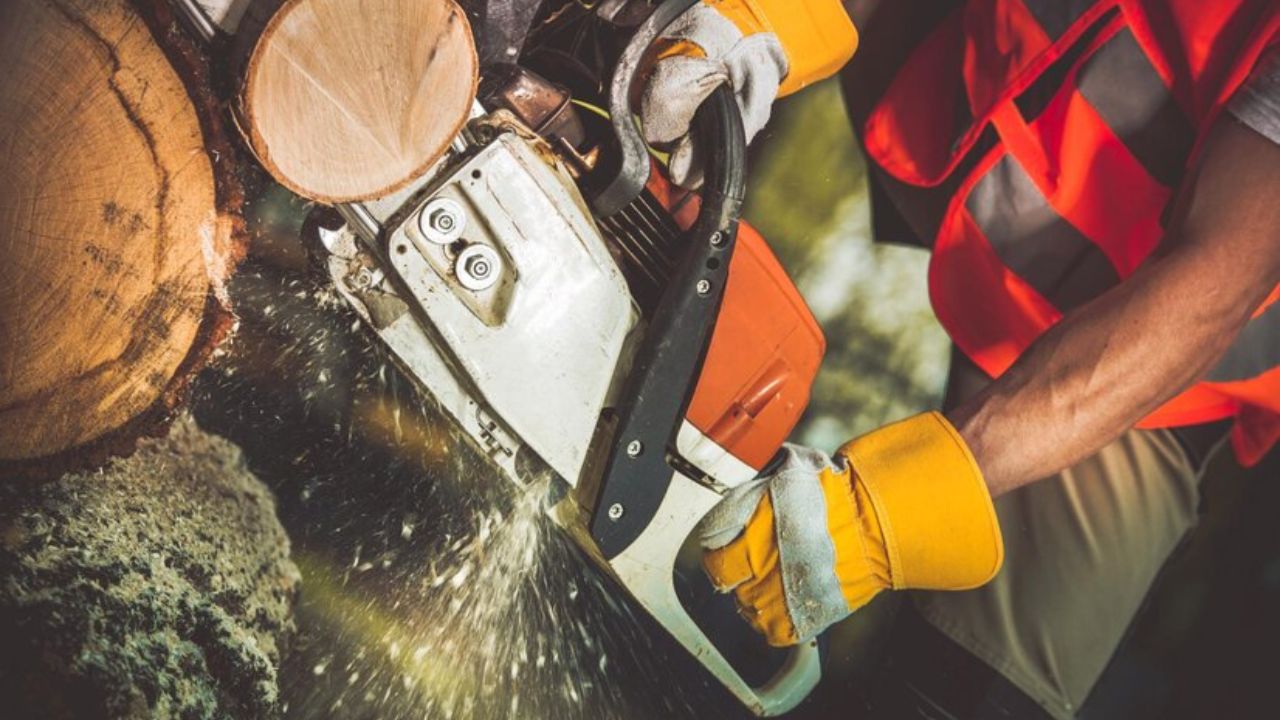HOME
Loggers Tool NYT: The Essential Guide

Loggers Tool NYT has taken the puzzle community by storm, offering a unique and engaging experience for word enthusiasts of all levels. In this guide, we’ll explore everything you need to know about this captivating game, from its basic rules to advanced strategies that will help you climb the leaderboards.
The Logger’s Tool, a relatively new addition to the New York Times’ suite of word games, has quickly become a favorite among puzzle lovers. It combines elements of classic word search games with innovative twists, creating a fresh and exciting challenge. Whether you’re a seasoned wordsmith or just starting your puzzle journey, this guide will equip you with the knowledge and skills to excel at the Logger’s Tool.
As we delve into the intricacies of this game, we’ll cover a wide range of topics. We’ll start with the basics, explaining how to play and the fundamental rules you need to know. From there, we’ll explore various strategies to improve your performance, discuss common pitfalls to avoid, and even touch on the history and development of the game.
By the end of this guide, you’ll have a comprehensive understanding of the Logger’s Tool and be well on your way to becoming a logging expert. So, grab your virtual axe, put on your thinking cap, and let’s start chopping through this forest of words!
Understanding the Basics
Before we dive into advanced strategies, it’s crucial to grasp the fundamental concepts of the Logger’s Tool. This game is all about finding words within a grid of letters, but with a unique twist that sets it apart from traditional word search puzzles.
In the Logger’s Tool, you’re presented with a grid of letters, typically 5×5 or 6×6. Your goal is to find words by connecting adjacent letters in any direction – horizontally, vertically, or diagonally. Unlike many word games, you can use the same letter multiple times in a single word, adding an extra layer of complexity and creativity to the puzzle.
The game’s name, “Logger’s Tool,” comes from the idea that you’re “chopping” through the grid to create words, much like a logger would cut through a forest. This theme is reflected in the game’s design and terminology, adding a fun and immersive element to the gameplay.
One of the key rules to remember is that words must be at least three letters long. This might seem simple, but it’s an important factor to keep in mind as you scan the grid for potential words. Additionally, proper nouns, slang terms, and abbreviations are typically not allowed, so stick to standard dictionary words for the best results.
Getting Started with the Logger’s Tool
Now that we’ve covered the basics, let’s walk through the process of actually playing the game. When you first open the Logger’s Tool on the New York Times website or app, you’ll be greeted with the day’s puzzle grid.
To start forming words, simply click or tap on a letter and drag your cursor (or finger, on touch screens) to connect adjacent letters. As you connect letters, you’ll see the word you’re forming appear at the top of the screen. If it’s a valid word, it will be added to your list of found words when you release the cursor or lift your finger.
It’s important to note that the game doesn’t just accept any combination of letters. The words you form must be valid English words that appear in the game’s dictionary. If you try to submit an invalid word, the game will let you know, and you can try again.
One of the unique features of the Logger’s Tool is that it allows you to use the same letter multiple times in a word. This opens up possibilities for longer, more complex words that might not be immediately apparent when you first look at the grid.
Strategies for Success
Now that you’re familiar with how to play, let’s explore some strategies to help you excel at the Logger’s Tool. These tips will help you find more words, increase your score, and climb the leaderboards.
First and foremost, take your time to scan the entire grid before you start forming words. Often, the best words aren’t immediately obvious, and a careful examination of the available letters can reveal surprising possibilities.
Look for common prefixes and suffixes. Words beginning with “re-“, “un-“, or ending in “-ing”, “-ed”, or “-er” can be great starting points. These affixes can often be combined with other letter combinations to form multiple words.
Don’t forget about less common letter combinations. While it’s easy to focus on familiar letter patterns, sometimes the highest-scoring words come from unexpected combinations. Keep an open mind and experiment with different letter sequences.
Another effective strategy is to focus on one area of the grid at a time. By thoroughly exploring all possible words in a specific section before moving on, you’re less likely to miss potential words.
Remember, longer words generally score more points. While it’s tempting to quickly submit every three or four-letter word you see, taking the time to find longer words can significantly boost your score.
Advanced Techniques for the Logger’s Tool
As you become more comfortable with the basic strategies, it’s time to explore some advanced techniques that can take your Logger’s Tool skills to the next level. These methods require a bit more practice and mental agility, but they can significantly improve your performance.
One advanced technique is to look for anagrams within the grid. An anagram is a word formed by rearranging the letters of another word. For example, if you’ve found the word “STOP”, look for other combinations of those letters like “POTS” or “TOPS”. This technique can help you squeeze extra words out of letter combinations you’ve already used.
Another powerful technique is to use word stems. A word stem is a base word that can have various prefixes or suffixes added to it. For instance, if you find the word “PLAY”, look for opportunities to extend it into words like “PLAYED”, “PLAYING”, or “PLAYER”. This method can help you quickly build a collection of related words.
Pay attention to vowel placement in the grid. Vowels are often the key to forming multiple words, so areas of the grid with a good balance of vowels and consonants can be particularly fruitful. Don’t neglect less common vowels like ‘Y’, which can sometimes function as both a vowel and a consonant.
Avoiding Common Pitfalls
While mastering advanced techniques is important. It’s equally crucial to be aware of common mistakes that can hinder your progress in the Logger’s Tool. By avoiding these pitfalls, you can ensure a smoother and more successful gaming experience.
One common mistake is getting fixated on a particular area of the grid. While it’s good to thoroughly explore each section, don’t spend too much time in one spot if you’re not finding words. Sometimes, moving to a different part of the grid can give you a fresh perspective and reveal words you might have missed.
Another pitfall to avoid is ignoring shorter words. While longer words generally score more points, don’t overlook three and four-letter words. These can add up quickly and might lead you to discover longer words you hadn’t noticed before.
Be careful not to rely too heavily on proper nouns or slang terms. Remember, the Loggers Tool NYT typically only accepts standard dictionary words. Trying to submit names or colloquial expressions can waste valuable time and energy.
Lastly, don’t get discouraged if you can’t find any more words. The Loggers Tool NYT is designed to be challenging, and it’s normal to hit a wall at some point. If you’re stuck, take a short break and come back with fresh eyes. Often, you’ll spot words you missed earlier.
The History and Development of the Logger’s Tool
Understanding the origins and evolution of the Loggers Tool NYT can provide valuable context and appreciation for the game. While it’s a relatively new addition to the New York Times’ puzzle collection, it draws inspiration from classic word games and modern digital innovations.
The New York Times has a long history of word puzzles, with its famous crossword dating back to 1942. In recent years, the publication has expanded its digital puzzle offerings to cater to a new generation of word game enthusiasts. The Loggers Tool NYT is part of this initiative, combining elements of traditional word searches with unique twists that take advantage of digital platforms.
The game’s development likely involved extensive testing and refinement to achieve the right balance of challenge and enjoyment. The ability to use letters multiple times in a word, for instance, is an innovative feature that sets the Logger’s Tool apart from many other word games.
As with many of the New York Times’ puzzles, the Logger’s Tool is updated daily. Providing a fresh challenge for players every 24 hours. This regular update schedule helps maintain player engagement and allows for ongoing improvements and adjustments to the game based on player feedback and data.
Maximizing Your Logger’s Tool Experience
To truly excel at the Logger’s Tool, it’s important to make the most of your gaming experience. This involves more than just finding words; it’s about developing a consistent practice routine and leveraging all the resources available to you.
Consider setting aside a specific time each day to play the Logger’s Tool. Consistency can help improve your skills over time. And having a regular “puzzle time” can be a great way to start or end your day. Many players find that tackling the puzzle first thing in the morning helps kickstart their brain for the day ahead.
Take advantage of the game’s built-in features. The New York Times often provides hints or tips within the game interface. These can be especially helpful when you’re stuck or want to learn new strategies. Don’t hesitate to use these resources – they’re there to enhance your gaming experience.
Keep track of your progress over time. The New York Times typically provides statistics on your gameplay, including your success rate and average solve time. Monitoring these metrics can help you identify areas for improvement and celebrate your progress.
Conclusion and Next Steps
Congratulations! You’ve now got a comprehensive understanding of the Loggers Tool NYT. From the basic rules to advanced strategies, you’re equipped with the knowledge to tackle this engaging word puzzle with confidence.
Remember, like any skill, mastering the Logger’s Tool takes practice. Don’t be discouraged if you struggle at first – each puzzle you complete will help hone your word-finding abilities and strategic thinking. Keep challenging yourself, and you’ll see improvement over time.
As you continue your Loggers Tool NYT journey, consider connecting with other enthusiasts. The New York Times often has forums or comment sections where players can share tips. Discuss strategies, or simply celebrate their achievements. Engaging with this community can provide motivation, new insights, and a sense of camaraderie with fellow word lovers.
Lastly, don’t forget to have fun! While it’s great to improve your skills and climb the leaderboards, the ultimate goal of the Logger’s Tool is enjoyment. Embrace the challenge, celebrate your successes, and most importantly, relish in the joy of words.
HOME
Rehabilitation Services: Helping Seniors Regain Independence

The Importance of Independence for Seniors
Maintaining autonomy is a cornerstone of well-being for older adults. Being able to make daily decisions, pursue hobbies, and manage personal routines contributes to both mental and emotional health. Independence fosters confidence, reduces stress, and helps seniors feel in control of their own lives, which can positively impact overall quality of life. Even small acts, like preparing meals or going for a walk, provide a sense of purpose and accomplishment that is essential for maintaining dignity as one ages.
For seniors requiring additional support, selecting the proper care environment can preserve their sense of autonomy while ensuring safety. A skilled nursing home facility Missouri, for example, balances professional medical care with opportunities for residents to engage in meaningful activities and maintain daily routines. This approach enables seniors to receive necessary assistance without compromising their independence or personal autonomy.
Core Components of Rehabilitation: Physical, Occupational, and Speech Therapies
Physical Therapy
Physical therapy aims to restore mobility, improve balance, and enhance strength, particularly for seniors. Custom programs often follow surgeries such as hip or knee replacements, focusing on targeted exercises to expedite recovery and prevent future injuries. Therapists employ various techniques, including stretching, strength exercises, and balance training, to alleviate pain and address mobility challenges, thereby fostering a more active and secure lifestyle for seniors who engage in activities such as walking, gardening, or light sports.
Occupational Therapy
Occupational therapy helps seniors relearn practical skills and daily activities, such as dressing, bathing, and meal preparation, by utilizing adaptive techniques and devices to enhance their independence. Therapists assess and modify environments to enhance safety and accessibility, fostering independence and minimizing accident risks.
Speech Therapy
Speech therapy is essential for individuals with speech or swallowing challenges due to strokes, neurological disorders, or surgery. Therapists create tailored exercises to enhance communication and ensure safe swallowing, thereby improving quality of life and social engagement. Support often includes language exercises, memory training, and speech clarity strategies, with more serious cases benefiting from augmentative and alternative communication tools.
How Technology Is Transforming Rehabilitation
Innovative technologies, such as robotic exoskeletons, motion sensors, and wearable fitness trackers, are significantly enhancing rehabilitation for seniors. These tools offer safe guided movements, real-time feedback, and motivating virtual reality environments, thereby improving rehabilitation outcomes and enhancing senior engagement. Moreover, video-based therapy and telehealth services expand accessibility for seniors in remote areas, allowing them to receive care from home.
The Role of Recreational Activities in Recovery
Recreational activities play a crucial role in senior rehabilitation by complementing traditional therapy. Engaging in hobbies such as gardening, music, or crafts helps alleviate loneliness and depression while promoting gentle physical activity. Activities such as art classes and music therapy foster fine motor skills and cognitive engagement. Group activities enhance social interaction and provide a sense of connection and accomplishment, ultimately improving mental health, strengthening social bonds, and boosting overall wellness, thereby creating an environment conducive to recovery.
Adapting Homes for Independent Living
Simple home modifications for seniors, such as grab bars, ramps, and non-slip flooring, can significantly improve safety and accessibility during rehabilitation. Other enhancements, including wider doorways, better lighting, stair lifts, and accessible bathrooms, are also beneficial. Occupational therapists often suggest personalized adjustments to facilitate mobility and prevent falls, thereby reducing anxiety for both seniors and their families by ensuring a secure living environment.
Community-Based Rehabilitation and Support Programs
Community-based rehabilitation programs, such as PACE, support seniors by providing medical care, therapy, transportation, and social events, thereby promoting independence and reducing hospitalizations. These initiatives address physical, social, and psychological needs, while local resources enhance accessibility and encourage engagement through volunteer work and educational events, thus preventing isolation.
Conclusion
Rehabilitation services are crucial for seniors who wish to maintain their independence. Through the strategic combination of traditional therapies, technological innovations, recreational activities, home modifications, and supportive community programs, older adults are empowered to overcome challenges and lead fulfilling, self-reliant lives. As the field of rehabilitation continues to advance and adapt, more seniors will have the opportunity to enjoy active, independent years with the dignity they deserve.
HOME
The Cultural Significance of Digital Libraries in Modern Society

Quiet Revolutions in Reading
Books have always been more than just paper and ink. They hold stories that shape beliefs memories that span centuries and blueprints for futures not yet written. But the shelf space needed to store all this knowledge? That’s gone digital. Now readers tap rather than turn swipe instead of shelve. The shift toward e-libraries has quietly redrawn the cultural map of reading.
In this reshaped landscape https://z-lib.qa continues to play an essential role in global access to knowledge. More than a platform it functions as a virtual public square where readers from Lagos to Lisbon explore works once locked away in elite institutions. And that matters. Because the kind of access once defined by geography and privilege is now redefined by bandwidth and curiosity.
Where Books Meet Borders
Digital libraries don’t care where someone lives. That’s a radical change. For decades certain texts were simply out of reach—too expensive too obscure or too politically sensitive. Now those same titles appear on screens in seconds. This borderless reach isn’t just convenient. It’s cultural currency.
Imagine a young student in a rural town exploring Renaissance philosophy or Indigenous literature without needing a visa or travel grant. That student gains not just knowledge but a sense of inclusion in a larger conversation. And with global access comes global responsibility. The way people engage with ideas now carries weight far beyond their hometowns.
How E-Libraries Shape Cultural Memory
The past lives online. Every digitized manuscript journal or novel becomes a preserved artifact not just of content but of context. Digital libraries serve as living archives echoing voices that might otherwise be forgotten. When a rare text is scanned and shared it joins a chorus of perspectives that broaden how culture is remembered.
And this isn’t just about old books. New authors self-publish on e-library platforms finding readers without the backing of major publishers. Their stories enter the cultural bloodstream without gatekeepers filtering the flow. Some of these works eventually influence public debates inspire films or stir political discussions. One entry in a digital library can spark something far bigger than itself.
Different Ways Digital Libraries Are Changing the Game
This shift doesn’t just impact what people read but how they engage with the world. Consider three key areas where this change is most visible:
-
Knowledge Without Permission
Traditional libraries often come with sign-up sheets ID checks and limited hours. E-libraries remove these hurdles. Readers no longer wait for books to become available. They download what they need when they need it. That freedom can be a lifeline especially in places with few physical libraries.
-
Diverse Voices Gain Ground
Writers once pushed to the margins now find loyal readers. From queer poets in Manila to historians in Nairobi digital libraries level the playing field. They don’t just reflect culture—they reshape it by elevating new voices and disrupting old hierarchies.
-
Learning Becomes Personal
With countless books at their fingertips readers mix and match topics in ways traditional curricula rarely allow. Someone exploring post-colonial theory might stumble into art history then pivot to climate science. That nonlinear path mirrors how culture really grows—messy layered and full of surprise.
In some corners of the web like reddit communities even share ways to connect with these libraries despite censorship or access barriers. This grassroots energy reflects how deeply people value the ability to read what they choose.
As digital libraries continue growing their influence seeps into everything from how textbooks are updated to how protest slogans are written. Literature no longer waits quietly in stacks. It lives among people on screens and in stories they pass on. The shift is already here. Now it’s just a question of how much further it can go.
HOME
How to Prepare Yourself Emotionally Before Beginning the Matchmaking Process

Key Takeaways
- Emotional readiness is the foundation of successful matchmaking and helps create meaningful, long-lasting relationships.
- Clarity on your relationship goals increases compatibility and match success.
- Building emotional resilience reduces dating anxiety and helps you navigate setbacks with confidence.
- Supportive friends and family are invaluable for encouragement and honest feedback during your journey.
- Prioritizing self-care keeps you balanced, confident, and more attractive to potential partners.
- Healthy boundaries and realistic expectations protect emotional well-being and foster authentic connections.
- Trusting your intuition ensures you stay aligned with your values and avoid mismatched relationships.
Starting the matchmaking journey is an exciting endeavor, yet it’s also a path that can surface a range of emotions—anticipation, hope, and sometimes even anxiety. Whether re-entering the dating world or seeking a deeper connection, ensuring you’re emotionally prepared can make the difference between a rewarding experience and a stressful one. If you want a supportive start, a trusted matchmaking service New York, NY can offer guidance and personalized matches tailored to your relationship goals.
Emotional readiness isn’t just about building excitement; it means reflecting on your needs, managing expectations, and equipping yourself to handle the inevitable ups and downs. According to the American Psychological Association, cultivating emotional strength before entering a romantic pursuit lays the foundation for long-term happiness and healthier relationships. Honing your self-awareness and self-care routine can pay dividends once you meet potential partners.
Reflect on Your Relationship Goals
Consider what you truly want from a new relationship. Are you eager to find a life partner or want to connect with someone who shares your values and interests? Clarifying your goals provides much-needed direction and empowers a matchmaker to find candidates who align with your vision. Notably, a recent eHarmony study showed individuals with clearly defined objectives are 60% more likely to achieve compatibility with their matches.
Journaling about past relationships or discussing your hopes with a close friend can help pinpoint your expectations and dealbreakers. The more self-awareness you bring, your dating experience will become more authentic.
Build Emotional Resilience
The path to finding a meaningful relationship is rarely linear. Emotional resilience—a psychological buffer against setbacks—helps you bounce back from disappointments and maintain a positive outlook. Incorporate mindfulness exercises, such as meditation or conscious breathing, into your daily routine to better process your emotions. Research from the Journal of Family Psychology indicates that 62% of singles who practiced mindfulness felt significantly less dating anxiety.
By fostering resilience, you’ll find navigating challenging conversations easier, handling rejection gracefully, and staying hopeful during prolonged search periods.
Surround Yourself with Supportive People
A strong support system can be one of your best assets when entering the matchmaking process. Maintaining regular contact with friends and family who bolster your confidence will remind you of your worth, especially on discouraging days. These positive influences can also serve as sounding boards, giving you honest feedback when unsure about a connection or a date.
Research by the New York Times highlights the significance of nurturing deep friendships for overall well-being, underscoring why this preparatory step is vital.
Practice Self-Care
Nourishing your physical and mental well-being is essential, both for sustaining your own happiness and for being ready to invest in a new relationship. Prioritize eating well, getting ample rest, and engaging in hobbies or activities that revive your spirit. Whether it’s a creative passion, nature walks, or attending fitness classes, self-care gives you a sense of fulfillment outside of romantic pursuits. This inner contentment replenishes your emotional reserves and makes you a more engaging and attractive partner.
Set Healthy Boundaries
Clearly communicating your preferences—how quickly you move from texts to in-person meetings or what constitutes a dealbreaker—can help safeguard your emotional health. Setting and enforcing boundaries is not only an act of self-respect but also fosters healthier patterns within budding relationships. For example, assertively suggest timelines for connecting offline or sharing personal details if you value gradual progression.
Healthy boundaries protect you from uncomfortable situations and ensure that you remain true to yourself throughout the matchmaking process.
Manage Expectations
Even with the best preparations, not every date or introduction will blossom into a match. Adopting a mindset of curiosity—rather than expectation—can make the process feel lighter and more enjoyable. Focus on learning about yourself and others during each interaction, rather than fixating on outcomes.
This approach allows genuine connections to develop naturally and helps you avoid feeling disheartened by mismatches or brief encounters.
Prepare for Meetings
Before meeting someone new, ensure you’re emotionally grounded. Jot down conversation starters or key questions you’d like answers to, confirming your plans to reduce last-minute stress. Try relaxation techniques such as deep breathing or visualization to calm pre-date jitters. These simple actions can help you show up feeling present, authentic, and open to connection.
Trust Your Instincts
Intuition is a powerful ally in the matchmaking process. Pay attention to your gut feelings—if something feels off, take it seriously and reassess the situation. Trusting yourself will not only protect you from incompatible matches but also ensure you’re making decisions that support your long-term happiness and well-being.
Learning to rely on your instincts will help you set boundaries, communicate authentically, and find someone who respects and values you.
Final Thoughts
Getting emotionally prepared for matchmaking isn’t a one-time action—it’s an ongoing journey of self-discovery, reflection, and intention. By clarifying your relationship goals, building resilience, nurturing your support network, and respecting your own boundaries, you lay a strong groundwork for authentic connections. As you embark on the matchmaking process, remember: emotional readiness will make dating more fulfilling and increase your chances of finding a relationship that’s truly right for you.
-

 HEALTH2 years ago
HEALTH2 years agoIntegrating Semaglutide into Your Weight Loss Plan: A Practical Guide
-

 HOME IMPROVEMENT2 years ago
HOME IMPROVEMENT2 years agoHow to Choose the Perfect Neutral Area Rug for Every Room
-

 LAW1 year ago
LAW1 year agoTeenage Drivers and Car Accidents in California: Risks and Parental Liability
-

 LAW1 year ago
LAW1 year agoPost-Divorce Considerations in California: Modifications and Long-Term Planning
-

 CONSTRUCTION1 year ago
CONSTRUCTION1 year agoConstruction Site Safety Regulations in New York and Your Rights as a Worker
-

 HOME1 year ago
HOME1 year agoSandra Orlow: The Teen Model Who Captivated the Internet
-

 FINANCE1 year ago
FINANCE1 year agoDigital Asset Management in Florida Estate Planning
-

 LAW1 year ago
LAW1 year agoKentucky’s School Football: Concussions, Injuries, and Legal Options
